by Susan Sink, CFSA member and www.tarheelfoodie.com
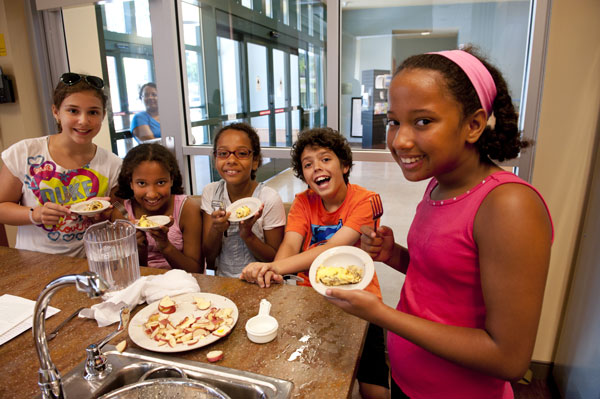
Each week as you walk through the farmers’ market or pick up your CSA box of beautiful organic veggies, you expect to see changes to the lineup. This can be challenging when you are trying to feed children that have grown to expect the same thing in each aisle of the grocery store every week of the year. Many of our modern cook books are written around the experience of modern-day grocery stores – with ingredients from around the world. So the question becomes how do we pass on the a unique experience of shopping with local farmers each week for seasonal food to the next generation in a way that they feel compelled to explore? Providing a path that embraces their lifestyle of convenience and customization?
About eighteen months ago, I was given the opportunity to beta-test IBM’s Chef Watson program. It’s a ‘cloud-based’ program using super-computers to make decisions and create inspirational recipes based on existing tested recipes from Bon Appetit combined with a vast amount of ‘big data’ about food chemistry and food pairings from various sources. Using all of that information with the set of ingredients that you choose in the program, it creates unique recipes for each user. You have the ability to choose preferences for culture, dietary restrictions and seasonal changes. And the program developers are not stopping there. As the programming team moves forward, there is a push to help folks deal with wasted items, abundance, dietary restrictions and health management.
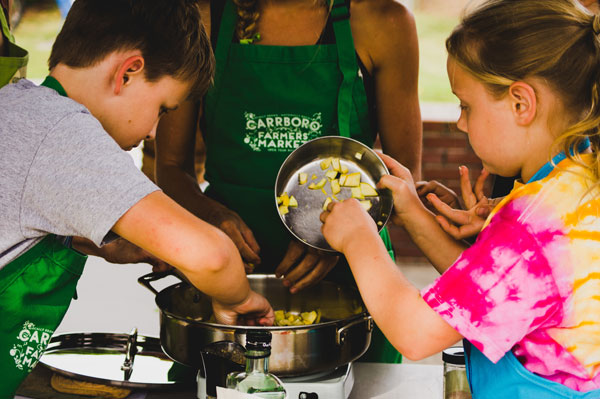
Photo by Jennifer Jaskolka
It sounds unconventional to use a computer to develop recipes, but I simply think of this application as a giant reservoir of unwritten cookbooks. You can create your own personal ‘edition’ of a cookbook with this program. It can be influenced by your local farmers’ market, your weekly CSA box, your dietary requirements or your need to simply explore food. It’s flexible. You decide which ingredients to use, the type of dish, cultural influence and dietary restrictions. Each time you make a selection, the computer generates new recipes for you. Thousands of calculations boiled down to recipes you can make in your home with your kids or friends, exploring everything your local farmers grow throughout the year.
Getting Kids Hooked on the Farmers’ Market
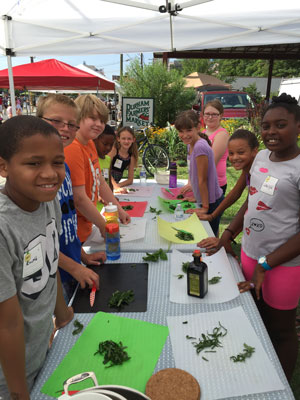
Photo by Casey Boone
If I haven’t hooked you yet into trying this program out, let me explain how I’ve been using it in my farmers’ market cooking classes for a year. Typically, the kids and I shop the market at the beginning of each class so they can talk to the farmers and make an important emotional connection to the food and understand how seasons and weather influence what is available. I’ve generally got an idea of what we are going to make so we start with a shopping list of required items and add flexible ingredients because I’ve brought several variations of the same recipe from Chef Watson. The kids get to decide which variations we will be making so they are more inclined to experiment and try new flavors during class. Interacting with each other becomes as much a learning experience for them as it does for me.
Most of the time, the market managers will ask me to work on a certain food or topic for class. The classes primarily consist of middle-school kids so they are still in that phase of life where they are willing to experiment. The kids’ experience level varies a lot when it comes to cooking. Some kids have some cultural requirements or food allergies, and sometimes I can’t get something I planned on at the market. I need to be flexible and this is where the program is useful in two ways.
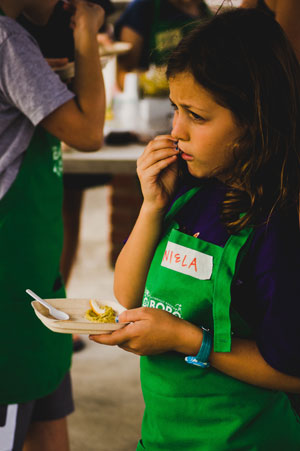
Photo by Jennifer Jaskolka
At a recent Frittata class at the UNC Health Center in Cary, I decided to use duck eggs after talking with the vendors at the Western Wake Farmers’ Market. They were having trouble selling them during the high season so it made sense to talk about how to store eggs in the freezer when they are plentiful and use them in recipes instead of chicken eggs. A lot of families have simply never tried to cook with duck or their eggs. Teaching the kids about the size, flavor and color differences between chicken and duck eggs helps them to understand what will pair well and how many to use in a recipe when you make a substitution. But Chef Watson already understands all of those things and I had several recipes that used the vegetables that I knew would be there that weekend, along with cheese I could get from the market vendors. That doesn’t mean other cheese won’t work, it simply demonstrated to the kids that we used what we found at the market and adjusted the recipes accordingly. We had a couple of kids that didn’t eat meat in that class, which was pretty simple to avoid. A couple of kids thought that they might not like the greens, but in the end, they tried the frittatas with the greens and found certain greens were less strong than others when combined with cheese and eggs and they liked the color and flavor of the mixes.
The Secret to Getting Kids To Try New Things
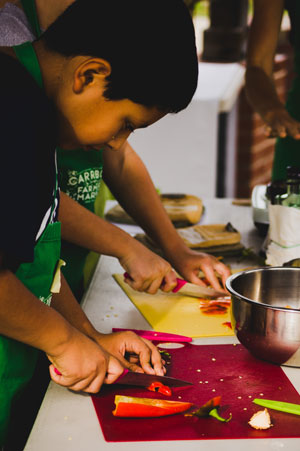
Photo by Jennifer Jaskolka
During a summer class last year at the Durham Farmers’ Market, the “Home Fries” class made spaghetti for breakfast. Carbonara. One of the odd things I discovered using this application with kids in class is that they seem to trust what the computer tells them for food combinations. They are more willing to try things that they might not if I just handed them one recipe. They get to look over several and make decisions. They are invested in their decision and committed to working with it to the end.
I could have totally done this class without the program, but I wanted to give the kids a half dozen recipe combinations to look at before we started shopping and have them make the decisions about what we were going to buy based on what they read in the recipes. The nice thing about the program is that it will also accommodate some typical food allergies now by selecting options like gluten-free, dairy-free or vegetarian. So while I planned to use fresh noodles from one of the market vendors, I could have pushed the recipe to be gluten-free or dairy-free or vegetarian using some of the more recent software enhancements and even pushed it to include some cultural changes to make it more Italian, Indian or Chinese. It might have selected specific herbs, meats, cheeses or changed the technique to fit any of these requests.
The kids were pretty excited when we went to talk with the vendors who explained the differences in the flavors of the greens and what they could expect to find if we made the recipe in the spring, fall or winter with different greens. Meats and cheeses also change during the year, and the program allows you to either create new recipes or adapt saved recipes with substitutions that it provides. So you could change a cheese or the egg type within the existing recipe. Or, you could start over to create a vegetarian and gluten-free recipe that is entirely different!
Chef Watson is a great way to try different flavors found throughout the year. The program is free to use and you can access it at ibmchefwatson.com.
Which brings me to my last example of how one recipe can accidentally turn into a second recipe from Chef Watson. I started out to make a recipe for pancakes at a “Market Bunch” kids class at Carrboro Farmers’ Market. I’ll admit that pancakes are not my favorite breakfast item and I was really using the application to push my own boundaries a little. There is always the concern at any local market of promoting food in abundance, unusual foods that farmers are trying to market with some challenges, and keeping to a budget that allows everyone to re-create the recipe at home.
During the summer, I use a lot of kefir in smoothies because it’s relatively inexpensive, you can make it at home if you want to and it’s pretty healthy. I thought the tartness might lend itself to interesting pancakes paired with fruit or homemade jams or syrups and as I was shopping the farmers’ market and talking with vendors about my plans, the folks at Chapel Hill Creamery suggested that I try their quark as a replacement for the kefir. I’d never heard of it or used it and I figured most of the kids in the class would be in the same boat. So I took up the challenge and brought some home to develop the recipes for class. The quark is a little like kefir in tartness but more like lebnah in texture so I had to adjust for the thick nature of it in the recipe from Chef Watson. It can vary by maker just like any other cheese so you might have to experiment a little with amounts, which is a good thing in class to teach flexibility.
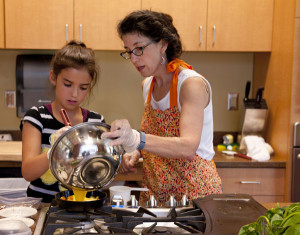 So with the pancake recipe being scheduled for May, I was a little concerned about the availability of fruit. The weather can wreak havoc on the best of plans, so I had a back up plan to use fruit preserves in the pancakes and honey suckle syrup so that the kids could really customize their individual pancakes by blending the jams into the base recipe or using the syrup as a sweetener in or on top of the pancakes. This is kind of fun because you’ll find all sorts of unusual and delicious preserves and syrups at local markets. The kids got to make their own pancakes, adding in ingredients from the market and the preserves. And when they finished, I adjusted the base recipe to make waffles with fruit by simply changing the way we added the ingredients Whipping the egg whites, adding a couple of additional items to achieve what I can only describe as cheese-cake waffles. Really creamy, light and unexpected. And I’ll admit they are better than the recipe that I’ve used for more than twenty-five years. The perfect accident and it would not have happened without the computer program being guided by locally available products.
So with the pancake recipe being scheduled for May, I was a little concerned about the availability of fruit. The weather can wreak havoc on the best of plans, so I had a back up plan to use fruit preserves in the pancakes and honey suckle syrup so that the kids could really customize their individual pancakes by blending the jams into the base recipe or using the syrup as a sweetener in or on top of the pancakes. This is kind of fun because you’ll find all sorts of unusual and delicious preserves and syrups at local markets. The kids got to make their own pancakes, adding in ingredients from the market and the preserves. And when they finished, I adjusted the base recipe to make waffles with fruit by simply changing the way we added the ingredients Whipping the egg whites, adding a couple of additional items to achieve what I can only describe as cheese-cake waffles. Really creamy, light and unexpected. And I’ll admit they are better than the recipe that I’ve used for more than twenty-five years. The perfect accident and it would not have happened without the computer program being guided by locally available products.
A Few Tips to Make Chef Watson Work for You
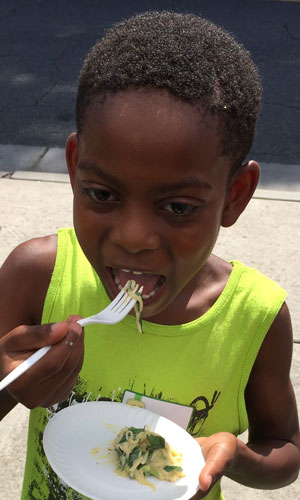 Each time you begin the process of developing a recipe, the application allows you to select up to four ingredients. And it gives you options for the style of cooking, the type of dish, cultural influences and dietary requirements. As you make selections it creates multiple recipes based on your selections and shows you how well they will work together with a synergy pie chart. If you decide to choose just a couple of ingredients, it will suggest additional ones, giving you the option to accept or decline them. As the recipes appear below your list of ingredients, you can look at the details of each one or return to the ingredient selection process and change them.
Each time you begin the process of developing a recipe, the application allows you to select up to four ingredients. And it gives you options for the style of cooking, the type of dish, cultural influences and dietary requirements. As you make selections it creates multiple recipes based on your selections and shows you how well they will work together with a synergy pie chart. If you decide to choose just a couple of ingredients, it will suggest additional ones, giving you the option to accept or decline them. As the recipes appear below your list of ingredients, you can look at the details of each one or return to the ingredient selection process and change them.
When you see recipes you like during the process, you can save them into a personal ‘box’. And if you want to customize the recipes further, the program stores additional substitutions for most of the ingredients, giving you some room to explore variations with friends and family and adjust for seasons, allergies or taste preferences. It will adjust the recipe on the spot for you. It’s a great way to try different flavors found throughout the year. The program is free to use and you can access it at ibmchefwatson.com.
But please remember, that this is young program and it requires a little interpretation on your part. It’s not perfect but a great starting point to explore what’s local to your area.
You can read more about Susan’s classes at the farmers’ markets in the Triangle and see the recipes at her website, tarheelfoodie.com.


